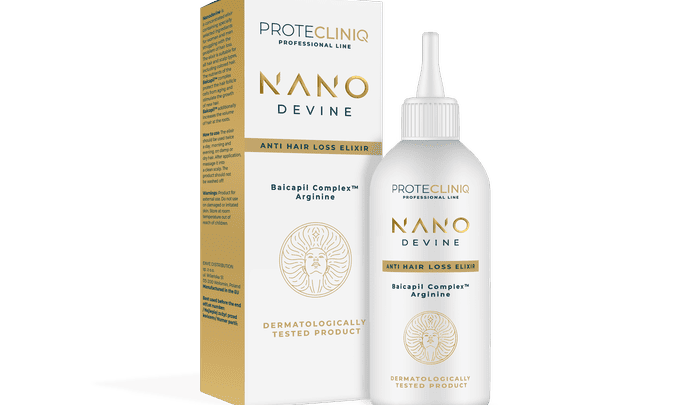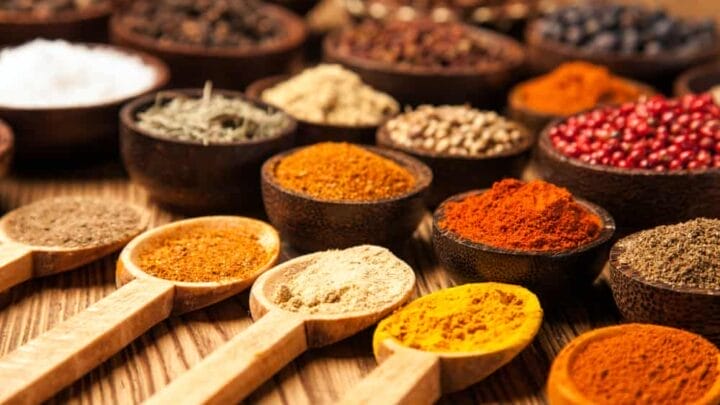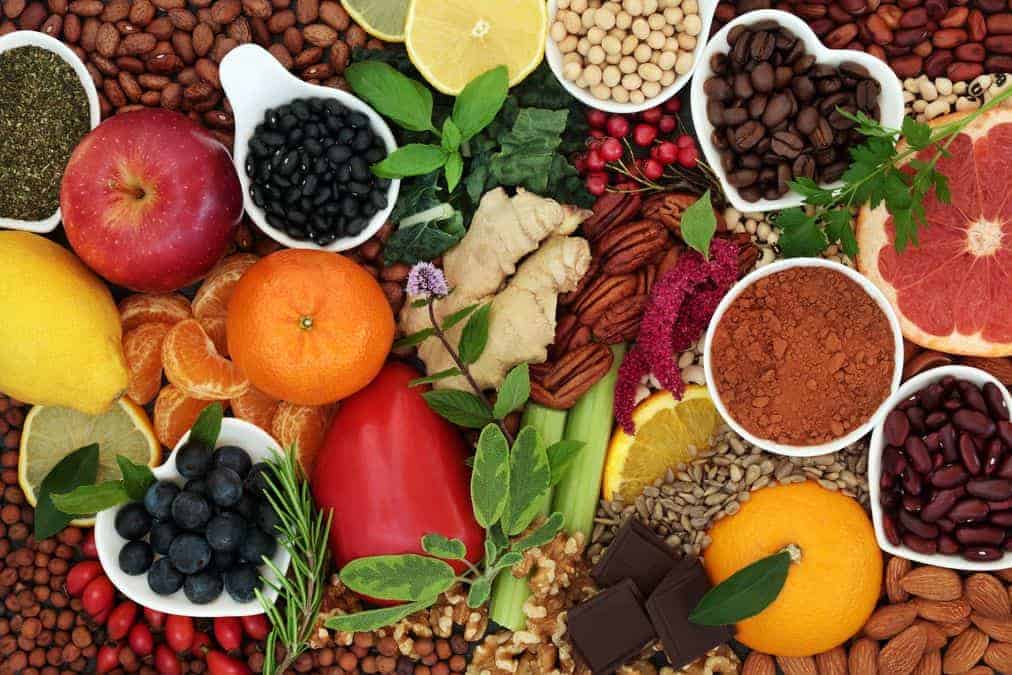
Flavonoids – health from fruits and vegetables
Our body can be compared to a complex machinery, an engine composed of many parts. In order to function properly, they need different types of “fuel”, nutrients such as vitamins and minerals. In addition to these, it is also worthwhile to provide other active compounds, and one of the particularly necessary ones is certainly flavonoids. We can’t function properly without them either, and their best source is vegetables and fruits, which is why we call them interchangeably bioflavonoids.
Contents
- 1 Flavonoids – what exactly are they and what functions do they perform in plants?
- 2 Flavonoids – what is their basic division?
- 3 Flavonoids – which natural sources of them are worth choosing?
- 4 Flavonoids – how much should be consumed per day and what is the risk of their lack or excess?
- 5 Flavonoids – which of their health-promoting properties do specialists emphasize?
- 6 Use for other conditions
Flavonoids – what exactly are they and what functions do they perform in plants?
When we hear the term flavonoids, we usually think it’s just one chemical compound. In fact, scientists have already identified several thousand such compounds of plant origin. Chemically, they belong to the group of polyphenols, which are responsible for the color of a particular plant or its smell and taste, but are also characterized by broad health-promoting effects .
They also have other protective functions, including against fungi, mold and other harmful microorganisms. At the same time, they protect them from UV radiation and other adverse external factors, such as the weather, and regulate their growth rate.
Flavonoids – what is their basic division?
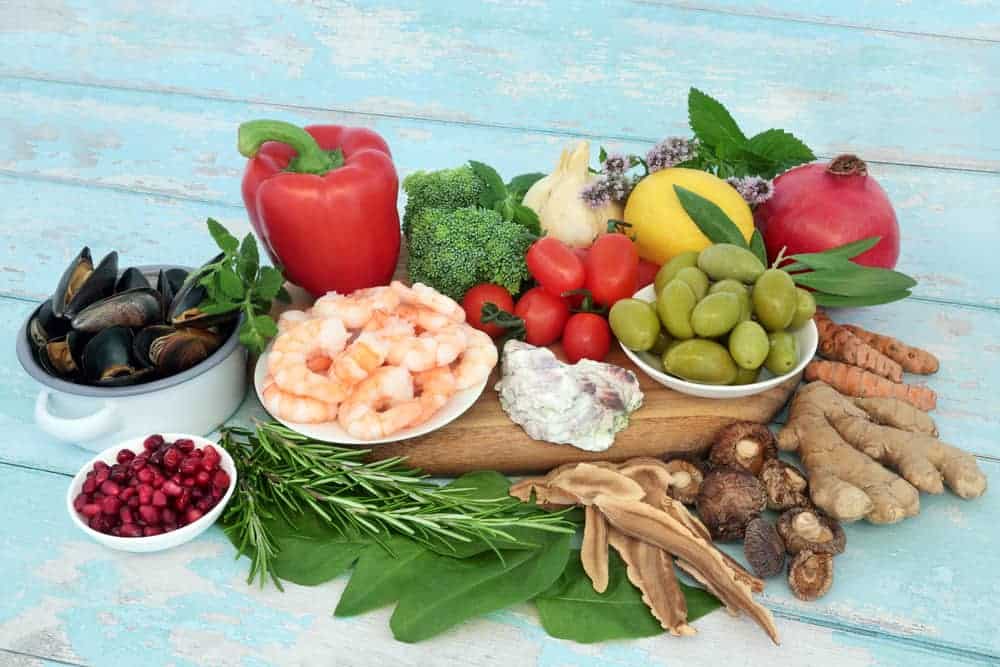
Before we address the therapeutic properties of bioflavonoids, it is worthwhile to first learn about their different types. Based on their structural structure, we divide them into:
- flavones, tluteolin, apigenin, diosmetin;
- flavonols, quercetin, fistein, kemferol;
- flavanones, hesperetin, hesperedin;
- flavanols, catechin, epicatechin, epigallocatechin;
- isoflavones, genistein;
- anthocyanins, cyanidin, malvidin, pelargonidin.
Several other compounds can also be included in this group of plant polyphenols, including biflavonoids, flavonolignans; flavonoid glycosidesters, chalcones, prenylflavonoids and proanthocyanidins.
Flavonoids – which natural sources of them are worth choosing?
Flavonoids can be supplied to the body in many ways, and most often we simply take dietary supplements having them in their composition. This is certainly faster and more convenient, but it is better to use natural sources and supplement the deficiencies of these compounds through a properly composed diet. There are many foods that contain large amounts of bioflavonoids, for example, the most of them (mg per 100 g of product):
Fruits:
- chokeberries – 1542 mg;
- Elderberries – 791.24 mg;
- cherries – 124.38 mg;
- Blueberries – 68.45 mg;
- grapefruit – 55.4 mg;
- orange – 43.88 mg.
Vegetables:
- capers (in brine) – 316.33 mg;
- parsley root – 210.08 mg;
- red onion – 33.07 mg;
- celery – 22.6 mg;
- yellow onion – 13.27 mg;
- celery root – 9.42 mg.
Flavonoids – how much should be consumed per day and what is the risk of their lack or excess?

The recommended daily intake of flavonoids for adults in our part of the world is 1-2 g, and it is worth observing it to avoid health problems. A deficiency of these compounds in the body can manifest itself in an increased tendency to form bruises and subcutaneous hem orrhages as a result of capillary breakage.
Equally dangerous as a deficiency is an excess of flavonoids. Too large amounts adversely affect the thyroid gland, metabolic processes, interfere with the transport and absorption of vitamin C, vitamin B9 (folic acid) and vitamin E. They can also interfere with the action of certain drugs, and are not recommended for pregnant and breastfeeding women. They can increase estrogen levels, which negatively affects reproductive function.
Flavonoids – which of their health-promoting properties do specialists emphasize?
We already know. what flavonoids are, in which products we can find the most of them, and what the risk of deficiency or excess is. So it’s time to learn about the most important health-promoting properties, and specialists point out, first of all:
Antioxidant activity
A huge threat to human health is posed by reactive oxygen species (ROS), commonly known as free radicals. Among other things, they can become the cause of the development of cancer, and it is flavonoids that are effective against them. As powerful antioxidants, they allow us to deal with excess free radicals and remove them from the body once and for all.
Anti-inflammatory effect
Inflammation poses an extremely serious threat to the body, even though it is its natural reaction to a threat such as a bacterial or viral infection. The action of flavonoids in this situation is to strengthen the immune system, which will better cope with the effects of inflammation by producing more antibodies.
Anti-allergic effect
People struggling with different varieties of allergies should also take care to include flavonoids in their daily diet. External factors are responsible for the development of an allergic reaction, to which the body responds by increasing histamine levels. The role of flavonoids here is to reduce its amount and thus alleviate the symptoms of allergy.
Counteracting cancer
Regular consumption of products that have bioflavonoids in them can significantly reduce the risk of developing cancer, including lung cancer. Particularly recommended here are isoflavones, which, as a growing number of studies conducted on this issue show, can inhibit the proliferation of cancer cells. At the same time, they reduce the excessive activity of mutagenic and carcinogenic compounds.
Strengthening the heart and circulatory system
The importance of adequate amounts of flavonoids for the proper functioning of the heart and other elements of the circulatory system should also not be underestimated. Their action includes regulating the amount of cholesterol in the blood serum, lowering the level of the “bad” fraction LDL, while increasing the “good” fraction HDL. The beneficial effects of flavonoids, derived for example from green tea, on the cardiovascular system also include:
- reducing blood pressure that is too high;
- supporting, together with vitamin C, the synthesis of collagen that strengthens blood vessel walls and minimizes the risk of varicose veins;
- reducing the possibility of atherosclerosis and the occurrence of a particularly dangerous myocardial infarction.
Supporting the work of the brain and nervous system
Our brain and nervous system also need the health support that a diet containing large amounts of the above-mentioned fruits and vegetables can give them. In this case, the following properties of flavonoids are conducive:
- protecting neurons from damage or destruction;
- acceleration and improvement of their regeneration processes;
- prevention of neurodegenerative diseases, Alzheimera and Parkinson’s, due to the reduction of free radicals;
- improvement of cognitive function, memory and concentration;
- alleviation of some symptoms accompanying dementia.
Use for other conditions
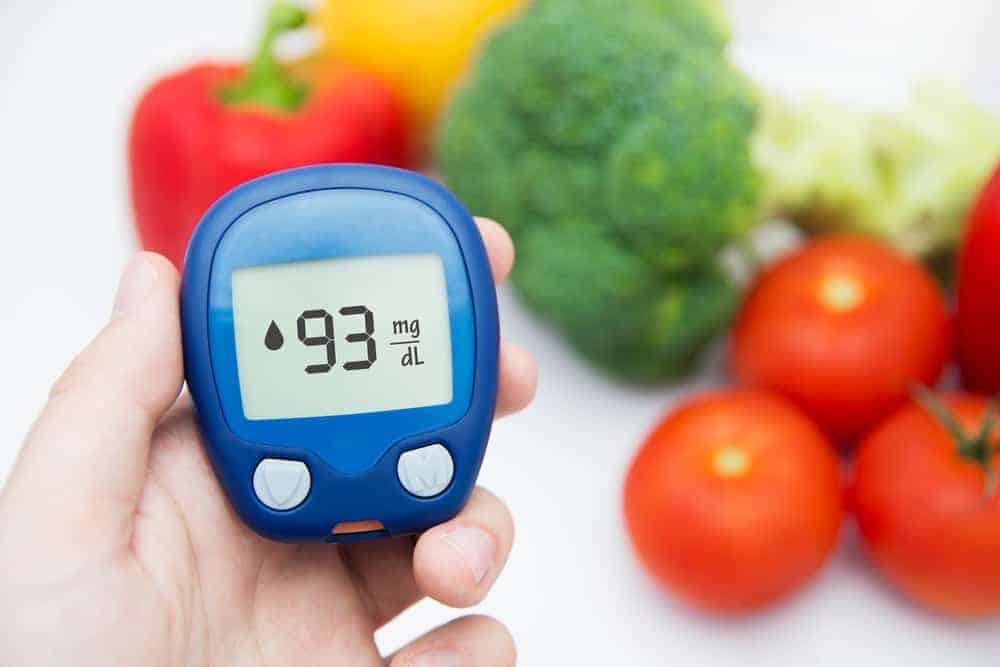
The right amount of flavonoids is also essential in the prevention and support of treatment processes for many other conditions. It is worth considering their importance in the case of:
- diabetes mellitus, blood glucose disorders usually caused by a decrease in the body’s sensitivity to insulin. Flavonoids counter insulin resistance and sugar spikes, stimulate the secretion of this important hormone;
- liver diseases, as they protect its cells from damage, strengthen and accelerate their regeneration due to their strong hepatoprotective effect;
- skin diseases, which they strengthen by participating in the synthesis of collagen, one of its building materials; they also protect it against UV radiation, oxidative stress and the effects of insect bites, while inhibiting the skin’s natural aging processes and accelerating wound healing;
- AIDS, a dangerous and deadly disease for which no effective cure has been found to date. Ongoing research on this issue has shown that the use of certain flavonoids can not only inhibit the proliferation of virus cells, but also their entry into the cells of the human body.
Sources:
- https://www.healthline.com/health/what-are-flavonoids-everything-you-need-to-know
- https://www.healthline.com/health/bioflavonoids


